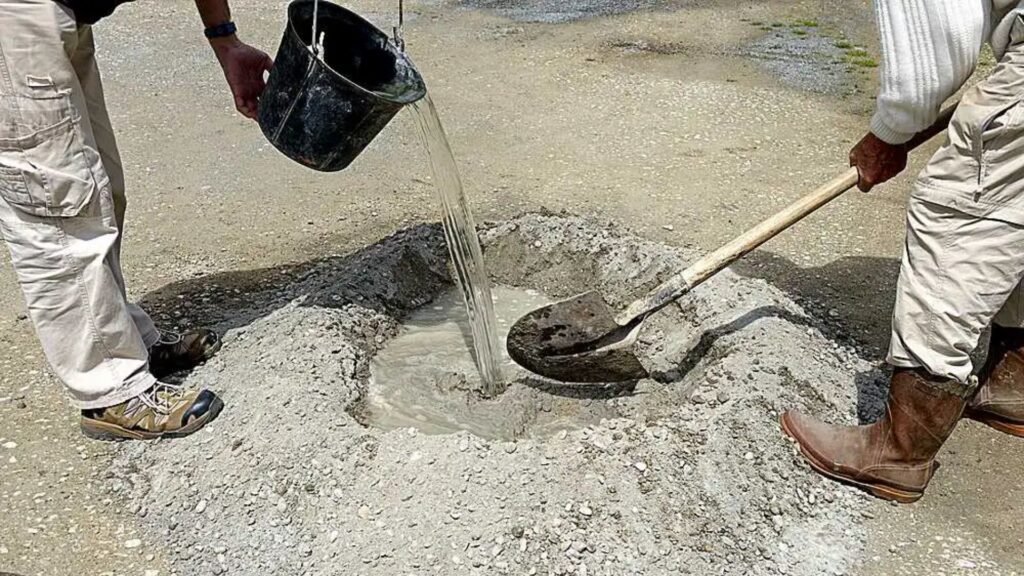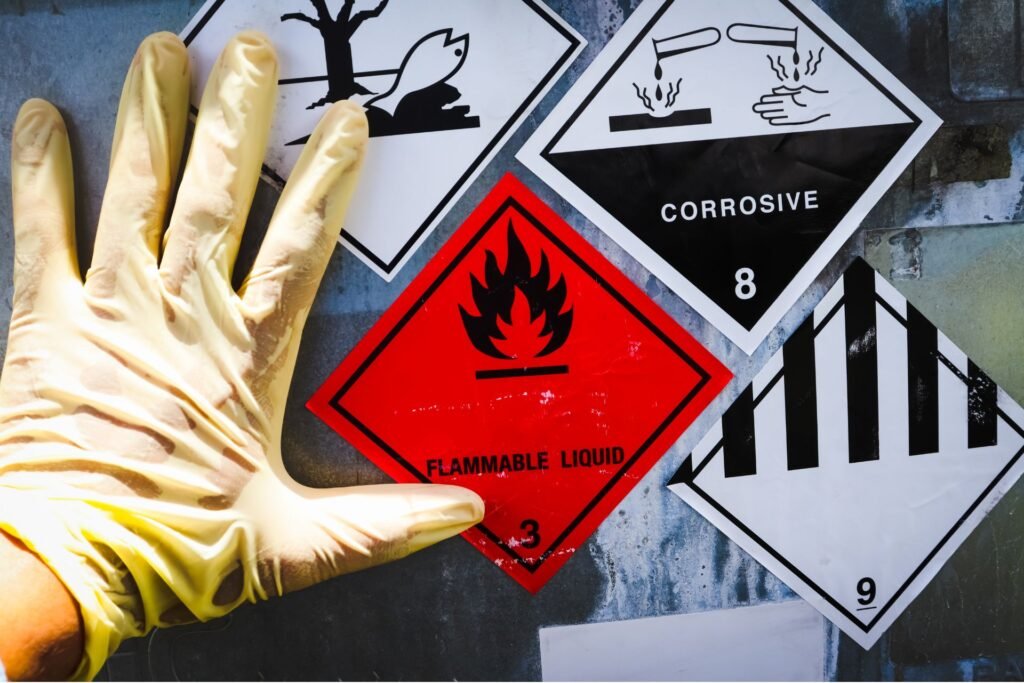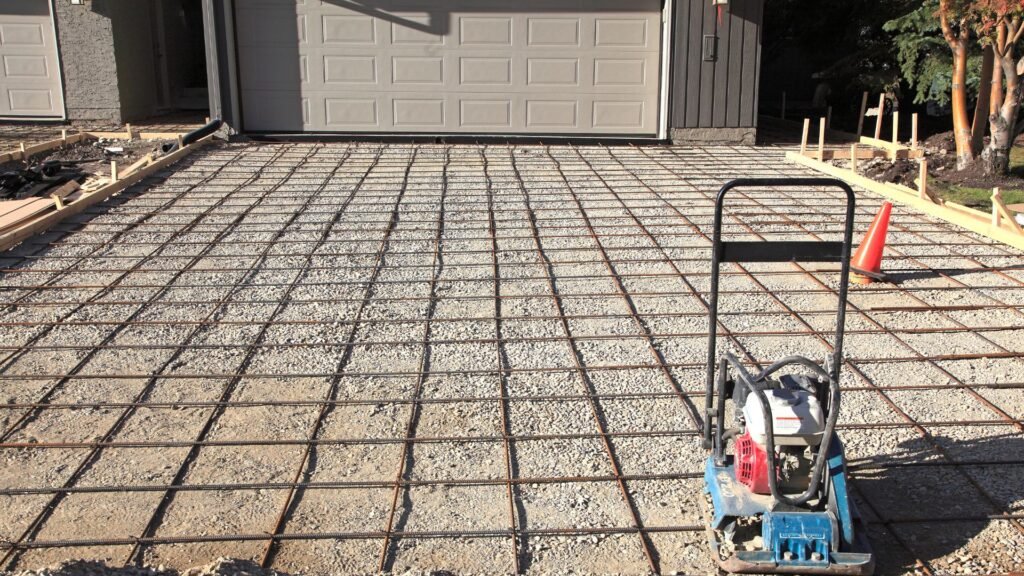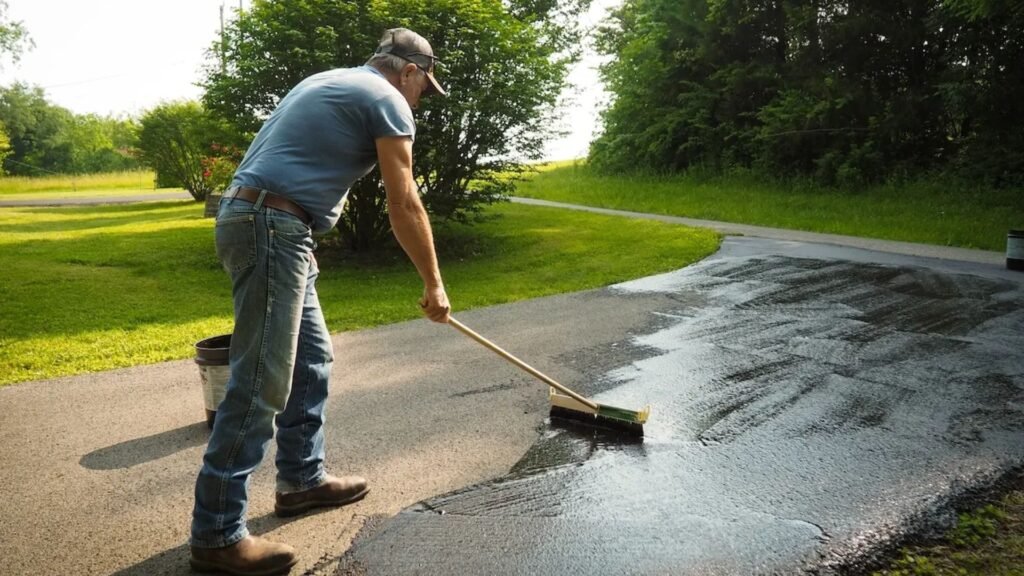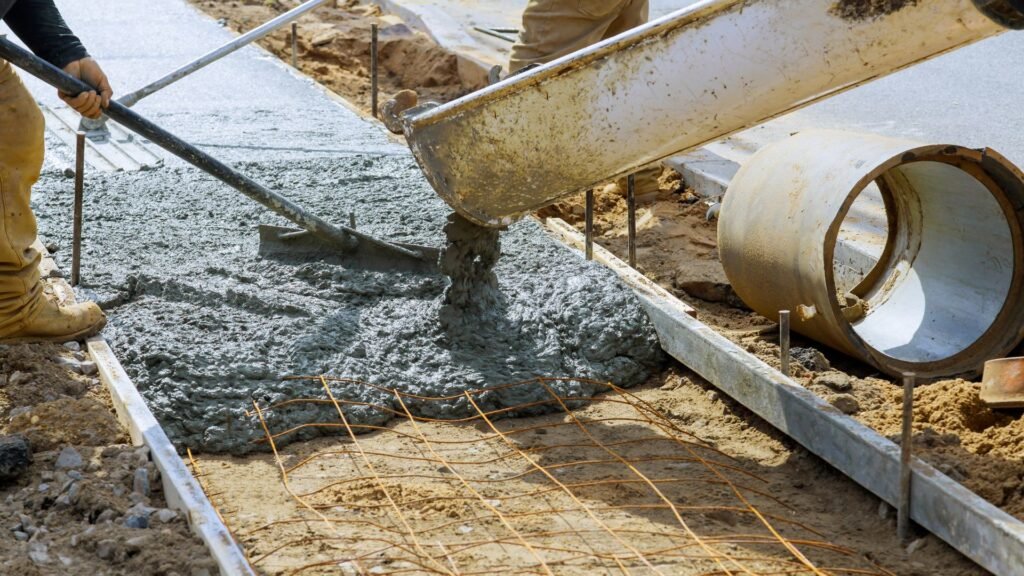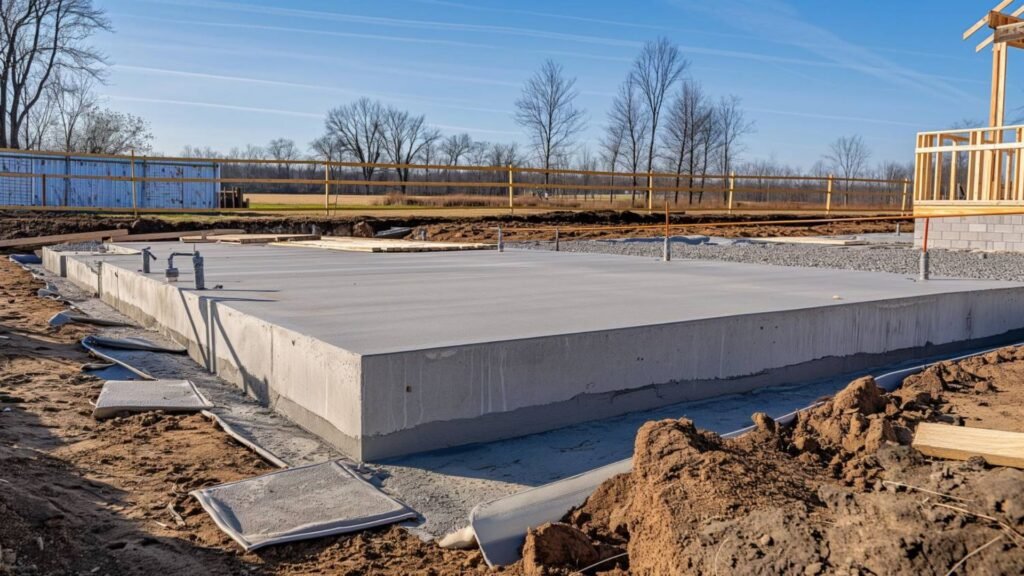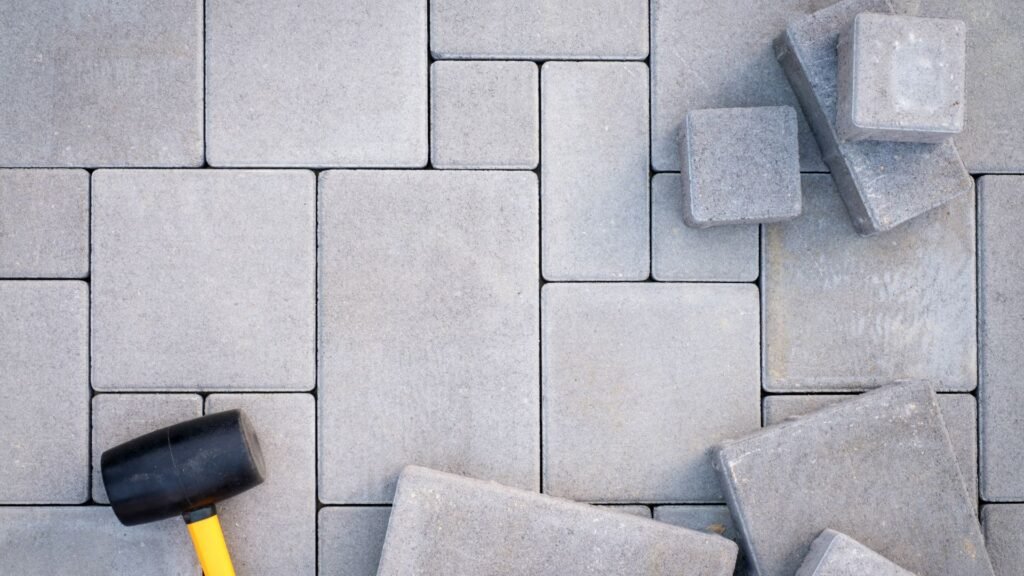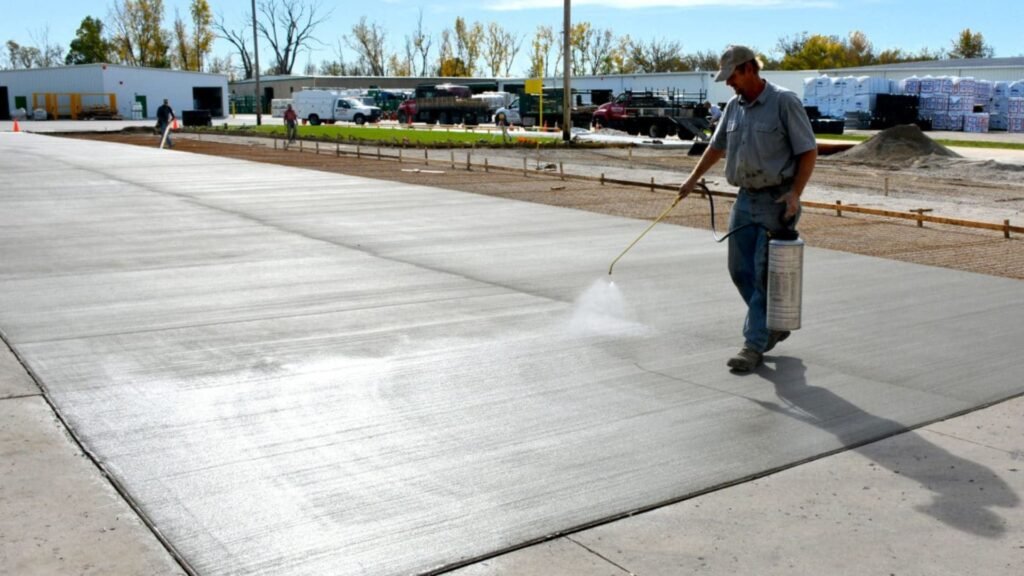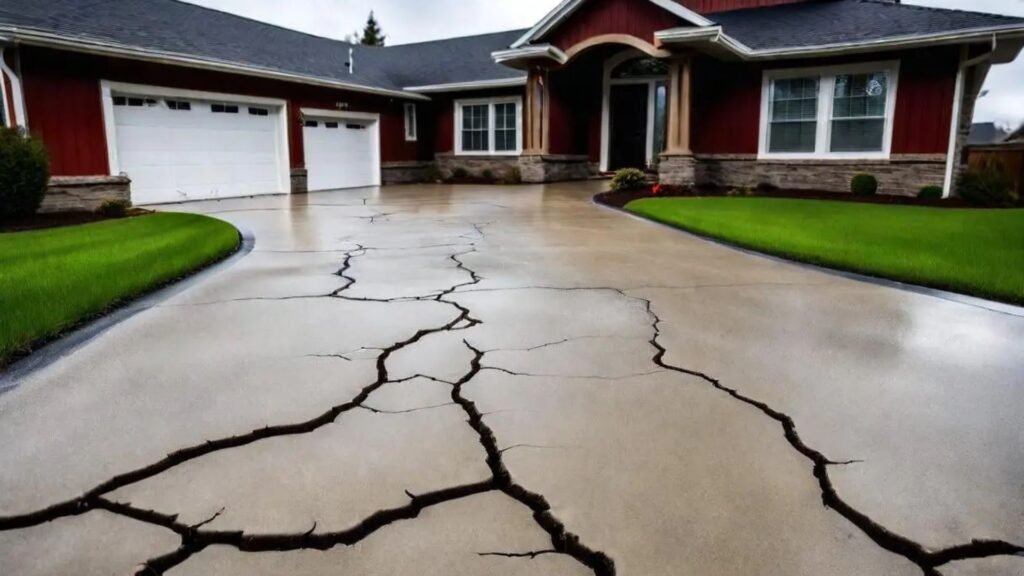Welcome to the world of concrete science, where something as simple as the water-cement ratio plays a critical role in determining the strength and durability of everything from sidewalks to skyscrapers. Whether you’re building a backyard patio or overseeing a major construction project, understanding the science behind this fundamental ratio can make all the difference between a long-lasting structure and one prone to cracking, crumbling, and early failure. In this post, we’ll explore why getting the water-cement ratio just right is crucial, breaking down the chemistry, practical applications, and the consequences of getting it wrong—all in a way that’s easy to understand, whether you’re a DIY enthusiast or a curious homeowner.
The water-cement ratio is critical because it directly impacts the strength, durability, and workability of concrete. A balanced ratio ensures proper hydration, creating a strong and dense material. Too much water weakens the concrete, making it more prone to cracks and damage, while too little water leads to poor bonding and brittleness. Achieving the right water-cement ratio is essential for long-lasting, reliable structures.
Table of Contents
What Is The Water-Cement Ratio?
The water-cement ratio is a critical concept in concrete mixing, but don’t worry—it’s not as complicated as it might sound. At its core, the water-cement ratio refers to the relationship between the amount of water and cement used in a concrete mix. Think of it as the recipe’s balance between two key ingredients, water and cement. When mixing concrete, getting the right ratio is essential for achieving the desired strength and workability of the concrete.
Why Does the Water-Cement Ratio Matter?
Imagine you’re baking a cake. If you add too much water to your batter, it’ll become runny, and the cake won’t hold its shape or rise properly. The same idea applies to concrete. If there’s too much water in the mix, the concrete may lose its strength. On the other hand, if you don’t add enough water, the mix becomes stiff and difficult to work with, much like trying to stir a batter that’s too thick.
The water-cement ratio plays a key role in balancing two important properties of concrete: strength and workability. Strength refers to how well the concrete can withstand loads and pressure, while workability is about how easy it is to shape and mold when it’s wet. A good balance between these two properties is crucial depending on the type of project you’re working on.
The Water-Cement Ratio Formula
In simple terms, the water-cement ratio is calculated by dividing the weight of the water by the weight of the cement used in the mix. For example, if you’re using 50 kg of cement and 25 kg of water, your water-cement ratio would be 0.5. This ratio helps determine how the final concrete will perform.
Typical Ratios for Different Applications
Different construction projects require different water-cement ratios. For example, residential projects, like building a patio or driveway, often use a water-cement ratio of around 0.45 to 0.6. This range provides a good balance of strength and workability. On the other hand, for industrial or high-strength applications—like constructing a bridge or skyscraper—the water-cement ratio might be lower, around 0.35 to 0.4, to ensure the concrete is as strong as possible, even if it means sacrificing some workability.
Workability vs. Strength Trade-Off
The key trade-off in any concrete mix is between workability and strength. A higher water-cement ratio makes the concrete easier to work with, allowing it to flow smoothly into molds or forms. But there’s a catch: the more water you add, the weaker the concrete becomes. Conversely, a lower water-cement ratio results in stronger, more durable concrete, but it can be harder to handle and shape.
The water-cement ratio is all about finding the right balance to suit your project’s specific needs. Whether you’re aiming for easy-to-mold concrete for small home projects or ultra-strong concrete for industrial use, understanding and controlling this ratio is key to getting the best results.
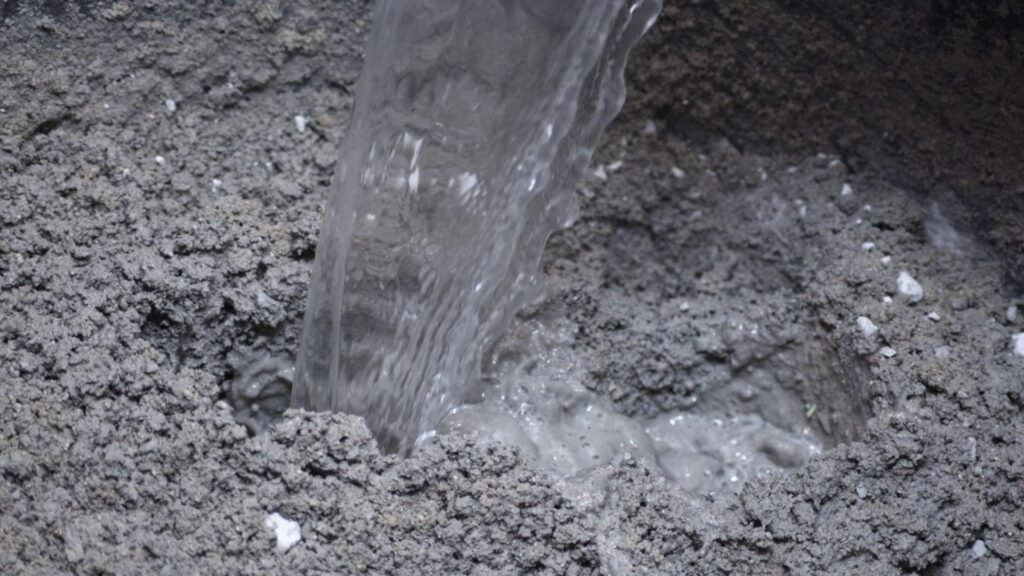
The Science Behind The Water-Cement Ratio
When discussing the durability and strength of concrete, one of the most crucial aspects is the water-cement ratio. This ratio directly influences the concrete’s strength, workability, and longevity. The science behind this is deeply rooted in the hydration process, which is essential to understanding how cement turns into a solid, durable structure.
Hydration Process: The Chemical Reaction Between Water and Cement
The hydration process is a chemical reaction that occurs when water comes into contact with cement. Cement is composed of various compounds, primarily calcium silicates, which react with water to form calcium silicate hydrate (C-S-H) and calcium hydroxide. The C-S-H gel is what binds the particles together, giving concrete its strength. Essentially, water acts as a catalyst, triggering the transformation of cement into a hardened material.
During hydration, the cement molecules absorb water, forming bonds and creating a solid matrix that gives the concrete its structure. Without sufficient water, this process cannot occur fully, leading to incomplete bonding. Conversely, too much water dilutes the cement paste, weakening the final product.
Why Too Much Water is a Problem
While water is essential for hydration, too much can compromise the integrity of the concrete. Excess water increases the porosity of the material, making it weaker and more prone to cracks. When too much water is added, the cement particles are spaced too far apart, resulting in a weaker bond between them. As the concrete dries and water evaporates, these spaces become voids, leading to a porous structure.
Porous concrete not only has reduced strength but is also more susceptible to external elements like moisture, chemicals, and temperature fluctuations. This can lead to deterioration over time, reducing the lifespan of the structure. In essence, too much water means more pores, lower strength, and a higher likelihood of cracks forming as the concrete cures.
Why Too Little Water is Also Problematic
On the flip side, insufficient water in the mix can be equally detrimental. If there’s not enough water to fully hydrate the cement, the chemical reaction is incomplete. This results in the concrete being dry, brittle, and difficult to work with. It may harden prematurely, making it challenging to properly place, spread, and finish the concrete.
Concrete that lacks the necessary water for hydration will not reach its full potential in terms of strength. It can develop shrinkage cracks, have a rough texture, and be prone to early failure. In addition, without adequate water, the internal structure will be less cohesive, leading to weak points in the material.
Key Points to Consider
1. Concrete’s Molecular Structure: How Water Influences Its Formation
At the molecular level, water is essential for creating the internal structure of concrete. When cement hydrates, the molecules form a network of bonds, with water acting as the medium that allows these bonds to form. Too much water disrupts this network, while too little prevents it from forming completely. Achieving the right balance ensures that the cement particles are packed tightly together, resulting in a dense and strong material.
2. Impact on the Final Strength and Integrity of the Structure
The water-cement ratio directly affects the strength of the concrete. A lower water-cement ratio means there is less water per unit of cement, which typically results in a denser and stronger final product. However, if the ratio is too low, workability suffers, making it harder to mix and place the concrete. On the other hand, a higher water-cement ratio increases the workability but sacrifices strength.
Striking the right balance is crucial for creating a structure that can withstand external pressures and environmental factors without losing integrity. Proper water content ensures that the concrete remains durable and resilient for years.
3. How Water Content Affects Curing Times and the Development of Cracks
Curing is the process where concrete gains strength over time as the hydration process continues. Water plays a pivotal role in this phase, as it allows the cement to fully hydrate and reach its maximum strength. If too much water evaporates too quickly during curing, the concrete can shrink, leading to surface cracks and structural weaknesses.
On the other hand, if there’s an excess of water in the mix, it can lead to prolonged curing times. The extra water takes longer to evaporate, delaying the setting process. Prolonged exposure to moisture can weaken the concrete, making it prone to cracking once it dries.
The water-cement ratio is a critical factor in determining the strength, durability, and overall performance of concrete. The right amount of water ensures optimal hydration, resulting in a dense and resilient structure. Too much water leads to a porous, weak material prone to cracking, while too little water makes the concrete brittle and difficult to work with. Understanding the science behind the water-cement ratio is essential for constructing structures that stand the test of time.
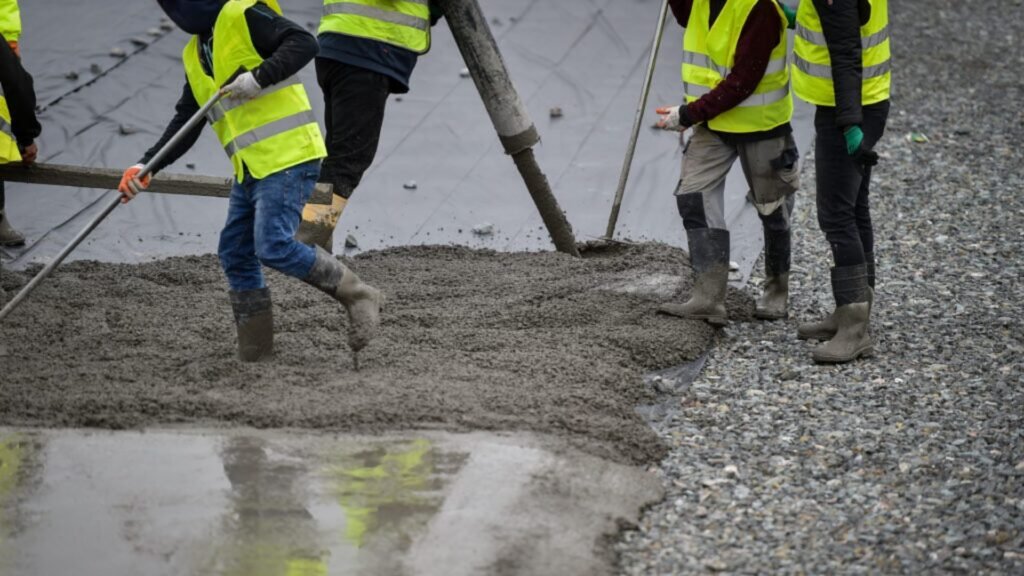
How The Water-Cement Ratio Impacts Concrete Strength And Durability
The water-cement ratio (W/C ratio) is a crucial factor in determining the performance and longevity of concrete structures. This ratio refers to the amount of water used in comparison to the cement in the mixture, and its precise management is essential for achieving desired strength and durability in concrete. This section explores the vital relationship between the water-cement ratio, concrete strength, and long-term durability, with visual references to real-world structural issues that arise from improper ratios.
The Direct Correlation with Strength
The water-cement ratio directly influences the strength of concrete, particularly its compressive strength, which is a key factor in most construction applications. As a general rule, a lower water-cement ratio produces stronger concrete. This is because less water means there is less space for air pockets in the mix, leading to a denser, more compact structure once it hardens. Denser concrete typically exhibits greater tensile and compressive strength, making it more capable of withstanding significant loads without cracking or breaking.
However, while a lower water-cement ratio increases strength, it often reduces workability — the ease with which the concrete can be mixed, poured, and shaped. When the mix is too stiff, it becomes difficult to handle, especially for projects requiring intricate designs or large-scale pours. As a result, achieving the perfect balance between strength and workability is a critical challenge in concrete production.
Durability Over Time
Beyond immediate strength, the water-cement ratio significantly impacts the long-term durability of concrete structures. If the ratio is too high, excess water can lead to a porous structure once the concrete cures. Over time, these pores provide pathways for moisture, chemicals, and other deleterious agents to penetrate the concrete, accelerating the deterioration process. Common issues linked to poor water-cement ratios include cracking, spalling, and reinforcement corrosion.
For example, in climates with freeze-thaw cycles, water can seep into these pores and freeze, expanding and causing cracks in the concrete. Similarly, in coastal regions where concrete is exposed to saltwater, chloride ions can infiltrate the structure, leading to corrosion of embedded steel reinforcement. Once the steel corrodes, it expands, further cracking the concrete and significantly reducing its structural integrity.
Proper water-cement ratios, on the other hand, minimize these risks by reducing the concrete’s permeability. Less permeable concrete resists moisture and chemical infiltration, making it more durable in harsh environments and less susceptible to long-term degradation.
Visual Examples: Common Structural Issues Due to Improper Water-Cement Ratios
Improper water-cement ratios are responsible for many visible structural problems in buildings and pavements. Here are some common issues:
- Cracking: Overly high water content creates porous concrete, making it more prone to cracking under stress or environmental conditions.
- Spalling: This occurs when moisture penetrates the concrete and freezes, causing pieces of the surface to break off.
- Efflorescence: Excess water can push salts to the surface of concrete, leaving unsightly white streaks or patches.
- Corrosion of Reinforcement: High water-cement ratios lead to increased permeability, allowing chloride ions to reach and corrode steel reinforcements, causing further cracking and weakening the structure.
Tensile and Compressive Strength: Impact of Water-Cement Ratio
The compressive strength of concrete, or its ability to withstand loads that push it together, is primarily influenced by the water-cement ratio. Lower ratios result in higher compressive strength, making the concrete less likely to crush under pressure. This is particularly important in structural applications such as foundations, columns, and load-bearing walls.
Tensile strength, which refers to the concrete’s resistance to being pulled apart, is also affected by the water-cement ratio. While concrete is naturally weaker in tension than in compression, a well-balanced mix can improve its tensile properties. This helps reduce the risk of cracking due to shrinkage or other stresses.
Case Study: Poor vs. Ideal Ratios in Major Construction Projects
A famous example of a failure due to poor water-cement ratio management is the collapse of the Civic Tower in Pavia, Italy, in 1989. The tower’s concrete had a high water-cement ratio, leading to low strength and durability. Over time, moisture infiltration caused severe deterioration, culminating in the structure’s collapse. This tragic event serves as a stark reminder of the critical importance of using the right water-cement ratio in construction.
On the other hand, the Burj Khalifa in Dubai is an example of successful concrete usage. For its foundation and core, a carefully controlled water-cement ratio was used to ensure optimal strength and durability. The structure has remained resilient in the face of extreme environmental conditions, proving that proper ratios can lead to long-lasting success.
Balancing Workability and Long-Term Durability
While low water-cement ratios improve concrete strength and durability, they reduce workability, making the concrete harder to handle. Achieving the right balance is key to ensuring that concrete can be easily poured and shaped during construction while still maintaining long-term durability.
One solution is to use chemical admixtures, such as plasticizers or superplasticizers, which can increase workability without the need for additional water. These admixtures allow for a lower water-cement ratio, providing both ease of use and strength in the final product.
The water-cement ratio is a fundamental aspect of concrete design that directly affects both strength and durability. Engineers and builders must carefully manage this ratio to create concrete that is not only strong but also capable of withstanding the test of time. By balancing workability and long-term performance, the right water-cement ratio can prevent structural issues and ensure the longevity of buildings and infrastructure projects.

Water-Cement Ratio And Sustainability In Construction
The water-cement ratio plays a pivotal role in determining the quality and durability of concrete, making it a key factor in sustainable construction practices. By maintaining an optimal water-cement ratio, builders can minimize waste, enhance the longevity of structures, and reduce the environmental impact of their projects. Let’s explore how controlling this ratio can contribute to more eco-friendly construction.
Less Water, Less Waste
One of the most effective ways to promote sustainability in construction is by carefully managing the water-cement ratio. Using too much water in a concrete mix can lead to weaker concrete, which is more prone to cracking, shrinkage, and other forms of damage. This not only shortens the lifespan of buildings but also generates more waste through repairs, replacements, and material disposal.
By keeping the water-cement ratio within optimal limits, typically between 0.4 and 0.6 depending on the project, builders can produce stronger and more durable concrete. This reduces the need for frequent repairs or premature rebuilding, ultimately cutting down on construction waste. In essence, less water means less waste, both in terms of materials and energy used in maintenance and reconstruction.
Environmental Impact
The environmental implications of the water-cement ratio extend beyond material waste. When excessive water is used in concrete, it compromises the structural integrity, leading to a shorter lifespan for buildings. Structures that need to be repaired or replaced more frequently not only consume additional resources but also contribute to a larger carbon footprint. The production of cement, one of the primary ingredients in concrete, is responsible for approximately 8% of global carbon dioxide emissions. Therefore, the more concrete that is wasted or replaced, the greater the environmental burden.
In contrast, a well-calibrated water-cement ratio leads to stronger, longer-lasting concrete, reducing the demand for new materials and lowering the overall environmental impact. By ensuring that concrete structures remain durable over time, builders can play a significant role in mitigating the carbon footprint associated with the construction industry.
Innovative Approaches
Advances in construction technology have provided modern solutions to help optimize the water-cement ratio without compromising the performance of the concrete. One such innovation is the use of admixtures—chemical additives that modify the properties of the concrete mix. These admixtures, such as superplasticizers and water-reducers, allow builders to reduce the water content in the concrete while maintaining or even improving workability and strength.
Superplasticizers, for instance, can increase the fluidity of the concrete mix without needing additional water, making it easier to pour and shape while still achieving the desired strength. These advancements not only improve the quality of the concrete but also contribute to more sustainable building practices by reducing water usage and enhancing the overall durability of the structures.
Key Points to Cover:
- The Role of the Water-Cement Ratio in Reducing Construction Waste: Maintaining an optimal water-cement ratio minimizes concrete waste, resulting in less frequent repairs and less material disposal.
- How Improved Concrete Longevity Benefits the Environment: Stronger, longer-lasting concrete means fewer repairs and replacements, which reduces resource consumption and lowers the carbon footprint associated with construction.
- Current Innovations Helping to Optimize the Mix Ratio for Eco-Friendly Projects: Technologies such as admixtures are enabling builders to use less water in concrete mixes while maintaining quality, leading to more sustainable and environmentally-friendly construction projects.
By focusing on an optimal water-cement ratio, the construction industry can take a significant step toward more sustainable practices, contributing to reduced waste, enhanced structural integrity, and a lower environmental impact.
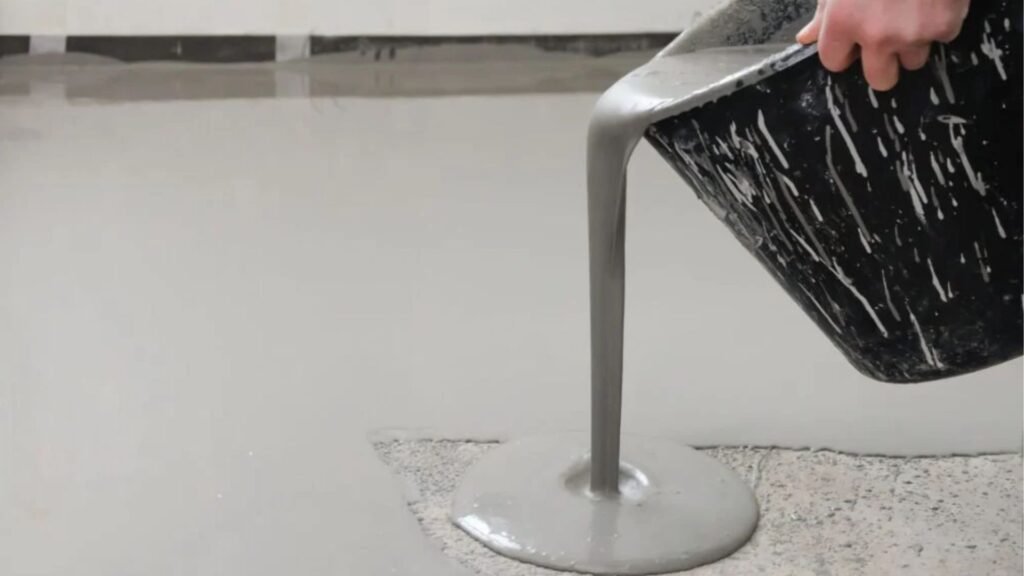
Common Mistakes When Managing The Water-Cement Ratio
Maintaining the correct water-cement ratio is critical for achieving high-quality concrete. However, several common mistakes can occur when trying to manage this balance, which can ultimately compromise the durability, strength, and longevity of the structure. In this section, we’ll explore the most frequent errors people make regarding the water-cement ratio and provide practical advice on how to avoid them.
Too Much Focus on Workability
One of the most prevalent mistakes in concrete mixing is prioritizing workability over the long-term performance of the concrete. Workability refers to how easily concrete can be mixed, placed, and finished on-site. To improve workability, many contractors or workers tend to add more water to the mix. While this can make the concrete easier to handle in the short term, it significantly compromises the strength and durability of the structure in the long run.
Adding too much water dilutes the cement’s ability to bond properly, resulting in weaker concrete. As the water evaporates over time, the excess moisture can leave voids or pores in the structure, reducing its resistance to weathering, cracking, and other forms of damage. This is why it’s crucial to follow the recommended water-cement ratio, even if it makes the mixing process slightly more challenging.
Ignoring Environmental Factors
Environmental conditions such as temperature, humidity, and wind speed can have a profound impact on the water-cement ratio. Unfortunately, many workers fail to adjust for these variables on-site, leading to issues like rapid evaporation or poor curing conditions.
For instance, in hot or dry environments, the water in the concrete mix can evaporate too quickly, weakening the concrete before it fully sets. Conversely, in cold or humid conditions, the concrete may take longer to cure, which can also affect its final strength. Ignoring these factors can result in a water-cement ratio that is either too high or too low, both of which negatively impact the quality of the concrete. Adjustments in water content should always be made based on the specific environmental conditions at the time of pouring.
Improper Measurements
Accurate measurements are essential when mixing concrete. However, many people fail to realize how even small variations in water content can lead to significant issues. Improper measurements, whether intentional or accidental, often result in a water-cement ratio that is off, which compromises the integrity of the entire mix.
For example, a mix that contains just a few extra liters of water can weaken the concrete significantly. On the other hand, too little water can make the concrete too stiff, making it difficult to mix and pour effectively. To avoid these mistakes, it is crucial to use precise measuring tools and perform routine tests, such as a slump test, to ensure the right consistency and strength in the final product.
Misunderstanding Water Addition After Initial Mixing
A common misconception is that adding water after the initial mixing stage is harmless or can even improve the mix. In reality, adding extra water after the concrete has been mixed is one of the worst mistakes you can make. This practice, often referred to as “retempering,” disrupts the careful balance of the water-cement ratio and weakens the concrete.
Once the concrete begins to set, adding water alters the hydration process, creating uneven bonding and ultimately resulting in a weakened structure. The final product may look fine on the surface, but it will likely have reduced strength and durability, leading to premature cracking, scaling, and potential failure under load.
Key Points to Remember:
- Small Variations Have Big Consequences: Even slight changes in water content can result in major issues like reduced strength, cracks, or premature wear. Stick to the recommended ratio and avoid adding water on a whim.
- Don’t Add Water After Initial Mixing: This is a critical error that compromises the integrity of the concrete. Retempering leads to poor performance in both the short and long term.
- Consider Environmental Conditions: Always adjust the water-cement ratio based on environmental factors such as temperature and humidity to ensure proper curing and strength development.
- Use Accurate Measurements: Precise measurements are key to achieving a consistent, high-quality mix. Regular testing, such as slump tests, will help ensure you stay within the acceptable range.
Practical Tips to Avoid Common Mistakes
1. Pre-plan for Site Conditions: Before mixing, evaluate the environmental conditions and adjust the water content accordingly. Use sunshades or water-reducing agents in hot conditions to control evaporation and maintain the mix quality.
2. Use High-Quality Measuring Tools: Avoid estimating water quantities by sight. Use measuring buckets or flow meters to ensure precision in your water-cement ratio.
3. Regularly Test the Mix: Perform routine quality checks, such as slump tests, to verify that the mix has the correct consistency and strength.
4. Train Your Team: Ensure that everyone involved in the mixing process understands the importance of the water-cement ratio and the consequences of mismanaging it.
By avoiding these common mistakes, you can ensure a strong, durable, and long-lasting concrete structure that meets or exceeds performance expectations.
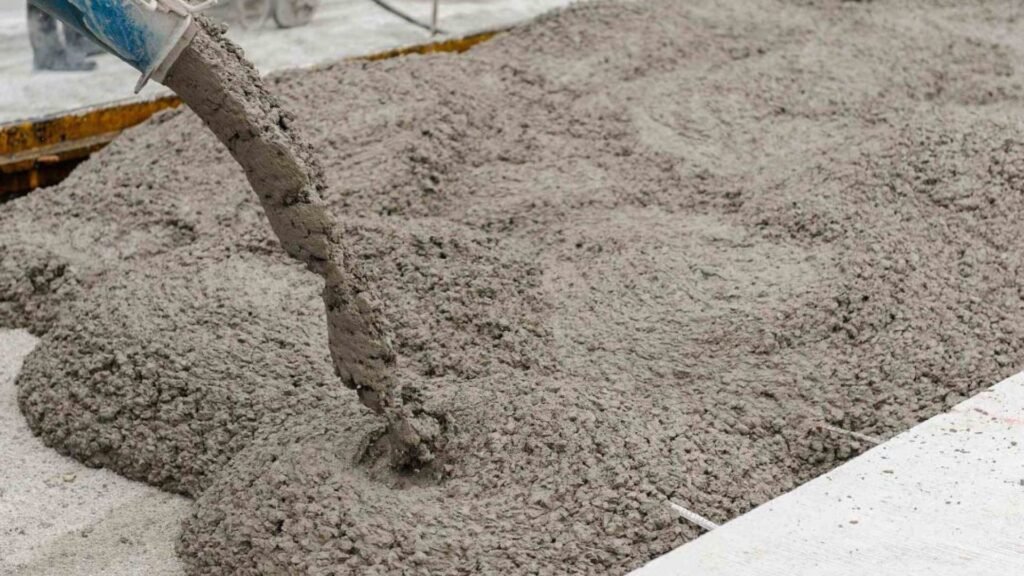
Best Practices For Maintaining The Right Water-Cement Ratio
Achieving the correct water-cement ratio is crucial for the strength, durability, and longevity of concrete. This ratio significantly influences the final quality of concrete, affecting everything from its setting time to its overall strength. Below are some best practices that can help maintain the right water-cement ratio for various construction needs.
Measuring Techniques
The foundation of achieving the perfect water-cement ratio lies in accurately measuring both water and cement. While it might sound simple, it requires careful attention to detail. Construction professionals use two main methods: volumetric and weight-based measurement.
1. Volumetric Measurement: This method involves calculating the volume of water relative to the volume of cement. It’s more commonly used for smaller projects where high precision may not be as critical.
2. Weight-Based Measurement: For large-scale projects, such as high-rise buildings, weight-based measurement is preferred. By weighing water and cement, workers can maintain a precise water-cement ratio, ensuring consistency in mix quality.
Consistency is key when mixing on-site, and even small deviations in the water-cement ratio can affect the concrete’s strength and workability. That’s why using precise tools like scales and measuring containers is recommended.
Field Testing
On-site tests are an essential part of ensuring the correct water-cement ratio, especially since conditions can vary depending on weather and location. One of the most widely used methods for field testing concrete consistency is the slump test.
1. Slump Test: This simple test evaluates the workability of the concrete mix. By measuring how much the concrete “slumps” after being poured into a cone and then lifted, workers can determine if the water-cement ratio is appropriate. A mix with too much water will slump too much, while one with too little will hardly slump at all.
2. Other Field Tests: Alongside the slump test, contractors may use other techniques, such as flow tests or Vebe tests, depending on the project requirements. Each test provides insight into whether the water content is optimal for the specific use of the concrete.
These field tests offer immediate feedback, allowing construction teams to make quick adjustments to the water-cement ratio and ensure quality control.
Use of Admixtures
In modern construction, admixtures play an essential role in optimizing the water-cement ratio. Admixtures are chemical additives mixed into concrete to improve its properties. When it comes to maintaining a low water-cement ratio without sacrificing workability, the right admixtures can make a big difference.
1. Water-Reducing Admixtures: These chemicals allow for a reduction in the amount of water needed for a given consistency. This means that the water-cement ratio can stay low while ensuring that the mix remains workable. This is especially useful in high-strength concrete where durability is crucial.
2. Superplasticizers: These are a type of high-range water reducer. Superplasticizers allow for significant reductions in water while maintaining excellent flow characteristics. They are commonly used in complex structures like bridges or skyscrapers where strength and performance are critical.
3. Air-Entraining Admixtures: In areas prone to freezing temperatures, air-entraining agents help concrete to resist damage from freeze-thaw cycles. This can be particularly important in projects like road paving, where concrete is exposed to the elements.
By using the right combination of admixtures, construction professionals can maintain the desired water-cement ratio while improving the overall performance of the concrete.
How Professionals Test and Adjust the Water-Cement Ratio On-Site
On-site testing of the water-cement ratio typically involves a combination of visual inspection, field tests like the slump test, and, in some cases, more advanced technology such as moisture sensors. These sensors measure the moisture content in aggregates and other components in real-time, allowing workers to adjust the mix accordingly.
In addition to these tools, construction teams often perform trial mixes to evaluate how different ratios perform under real conditions. These tests allow for fine-tuning before pouring begins, ensuring that the final product meets the required specifications for strength and durability.
Tools and Technology Available for Precision in Mixing
With advancements in construction technology, maintaining a precise water-cement ratio has become easier and more efficient. Some of the most effective tools include:
1. Moisture Probes: These devices measure the moisture content in the sand, aggregate, and concrete mix. By doing so, they help ensure that any moisture already present in the materials is accounted for, preventing excess water from being added.
2. Automated Batching Systems: These systems control the addition of water and cement, ensuring the correct proportions are mixed every time. This reduces the risk of human error and increases the consistency of the concrete mix.
3. Mobile Apps: With the help of technology, mobile applications allow construction teams to calculate water-cement ratios on the go, monitor weather conditions, and adjust the mix accordingly. This is especially useful in dynamic environments where weather changes can affect the moisture content of materials.
Practical Recommendations for Different Construction Scenarios
The ideal water-cement ratio can vary depending on the specific construction project. Here are some practical recommendations for different construction types:
1. Paving: For roadways and sidewalks, concrete needs to be durable enough to withstand heavy traffic and weathering. A lower water-cement ratio, often between 0.45 and 0.55, is recommended to ensure high durability and prevent cracking.
2. High-Rise Buildings: For tall structures, the strength of concrete is critical. High-strength concrete often requires a lower water-cement ratio (around 0.35 to 0.4) to ensure structural integrity. In these cases, admixtures like superplasticizers are often used to maintain workability with less water.
3. Foundations and Retaining Walls: These structures require concrete that is both strong and workable, as they need to support significant loads. A moderate water-cement ratio of 0.4 to 0.5 is typically used to achieve a balance between strength and workability.
Maintaining the correct water-cement ratio is vital for the success of any concrete project. By following best practices, conducting field tests, using advanced tools, and incorporating modern admixtures, construction teams can ensure that their concrete mixes deliver the required performance and durability for any application.
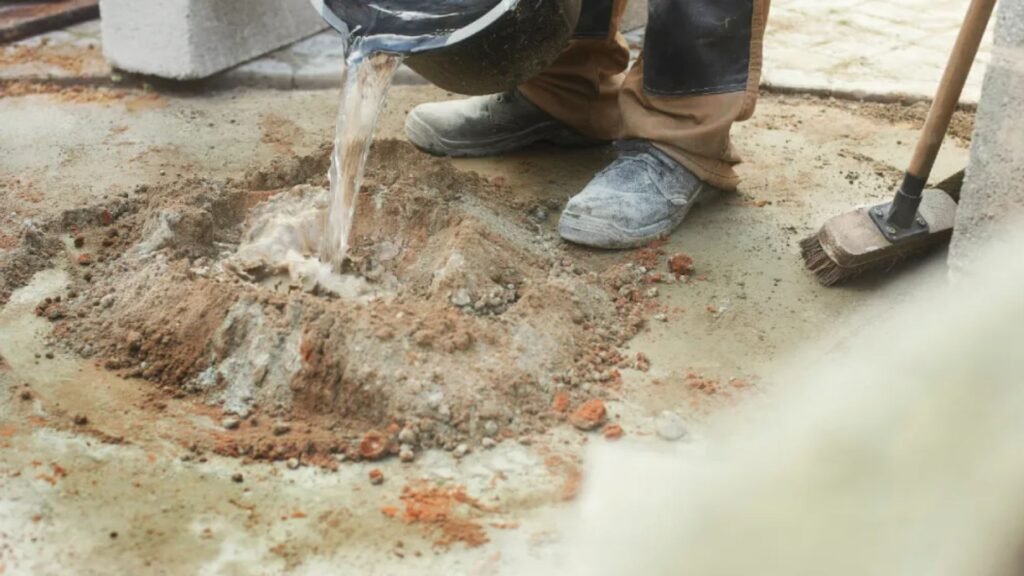
FAQs: About Why Is The Science Of The Water-cement Ratio So Critical?
What is the water-cement ratio?
The water-cement ratio is the ratio of the weight of water to the weight of cement used in a concrete mix. It determines the concrete’s strength and workability. A lower ratio results in stronger concrete, while a higher ratio makes the mixture more workable but weaker.
Why is the water-cement ratio so important in concrete?
The water-cement ratio is crucial because it controls the hydration process, which is essential for concrete strength and durability. Too much water dilutes the cement paste, weakening the structure, while too little water can result in incomplete hydration, leading to a brittle and unworkable mix.
How does the water-cement ratio affect concrete strength?
A lower water-cement ratio typically leads to stronger concrete because it reduces the porosity and increases the density of the hardened concrete. With less water, the cement particles can form a more robust bond, resulting in greater compressive strength.
What is the ideal water-cement ratio for residential construction?
For most residential construction projects, such as driveways or foundations, the ideal water-cement ratio is typically between 0.4 and 0.6. This ratio balances strength and workability, ensuring the concrete is durable while still easy to mix and pour.
Can I add water to concrete after it’s mixed?
No, adding water to concrete after mixing can weaken the final product. Extra water dilutes the cement paste, reducing its ability to bond properly and increasing the risk of cracks and other structural problems. Always measure water carefully during the initial mix.
What happens if the water-cement ratio is too high?
A high water-cement ratio leads to weaker, more porous concrete. Excess water creates air pockets within the mix, which reduces its density and strength, making it more susceptible to cracks, freeze-thaw damage, and general deterioration over time.
What happens if the water-cement ratio is too low?
If the water-cement ratio is too low, the concrete may not hydrate properly, leading to a brittle, difficult-to-work-with mix. It becomes hard to pour and spread, and the concrete might not achieve its full strength potential due to incomplete cement hydration.
How can I test the water-cement ratio on-site?
One common way to test the workability of concrete on-site is the “slump test.” This test measures the consistency of the mix and indirectly indicates if the water-cement ratio is appropriate for the project. A proper slump ensures the mix is workable without compromising strength.
How does the water-cement ratio affect concrete durability?
Concrete with an optimal water-cement ratio has fewer pores and cracks, which improves its durability. A proper ratio helps the concrete resist environmental damage, such as freeze-thaw cycles, moisture penetration, and chemical exposure, leading to longer-lasting structures.
Are there modern technologies that help optimize the water-cement ratio?
Yes, modern admixtures and additives can help optimize the water-cement ratio. These materials improve the workability of concrete without the need for excess water, allowing for a lower water-cement ratio that enhances strength and durability while still being easy to work with during application.
Conclusion
In conclusion, the water-cement ratio plays a pivotal role in determining the quality and longevity of concrete, making it essential for both DIY enthusiasts and professional builders to understand. As emphasized throughout, the right balance ensures optimal strength, durability, and workability, with too much water leading to weaker concrete and too little causing difficulty in application. Finding the perfect ratio is key to a successful construction project, whether you are building a small home structure or tackling a large-scale development. In conclusion, always keep the water-cement ratio in mind, and don’t hesitate to consult a concrete expert or follow industry-standard guidelines to ensure your project stands the test of time.
About the Author:
Mike Veail is a recognized digital marketing expert with over 6 years of experience in helping tradespeople and small businesses thrive online. A former quantity surveyor, Mike combines deep industry knowledge with hands-on expertise in SEO and Google Ads. His marketing strategies are tailored to the specific needs of the trades sector, helping businesses increase visibility and generate more leads through proven, ethical methods.
Mike has successfully partnered with numerous companies, establishing a track record of delivering measurable results. His work has been featured across various platforms that showcase his expertise in lead generation and online marketing for the trades sector.
Learn more about Mike's experience and services at https://theleadguy.online or follow him on social media:
